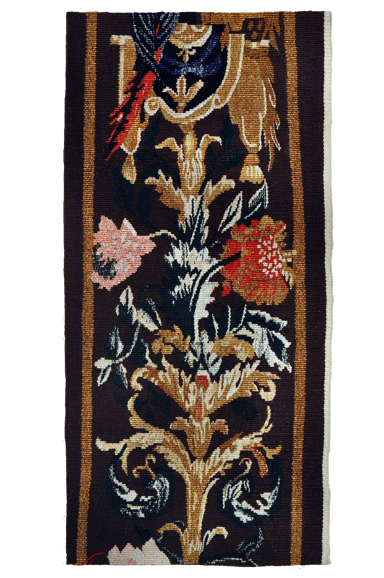
Previous artist Next artist
Despite the artistic agenda for a new textile art set in the 1960s by Polish artists, and the widening of concepts in the 1970s and 1980s by means of ever bolder experiments in which a multiplicity of materials in mixed techniques conquered space and forced traditional woven tapestry into the background, I became attracted to, and fascinated by, this classical genre. Woven tapestry has become for me an obsession, and my field of art, too. From the very outset in art school and later during my stay in Aubusson, I had a strong passion for the haute lisse and basse lisse techniques, which suit my way of working and which have become my chosen mediums in my artistic creativity.
The appearance of the new tendency in textile art in the 1960s put pressure on interest in traditional tapestry, first and foremost on the kind woven by professional workshops after cartoons made by artists. But it also served as a spur for new generations of independent, committed tapestry-weavers. Some remained faithful to the woven tapestry genre and some developed their own technique. It is notable that despite the decades of experimental fibre art, the movement away from the wall, and the Lausanne Biennales (which ended in the 1990s), interest in woven tapestry actually seems to have increased.
My choice for the Web of Europe project, a bordure section rich in flowers and foliage from the Brussels tapestry Mercury Hands over the Infant Bacchus to the Nymphs, should be seen in the light of a study trip I made to Florence in the 1990s. There, I visited the famous Lisio Foundation Jacquard weaving centre and saw the old looms at work, as well as the foundation’s collection of beautiful, exclusive silk and velour materials.
The pomegranate was a favourite motif for centuries. In time, it was refined into a pattern of detailed flowers and foliage repeated in beautiful pattern sequences. This motif, infinitely varied, gave me the idea for new cartoons in which this wealth of flowers and foliage is included as graphically ornamental fragments. Drawing on familiarity with these tapestries, I have retold the bordure in a traditional ‘colour-true’ tapestry technique, but have included gold, silver, and other metal threads to give the image brilliance.
It has been a great pleasure and challenge to re-make this art piece from the eighteenth century and to have had the opportunity to work with so many colours for the first time in my life.
